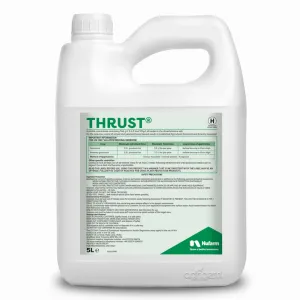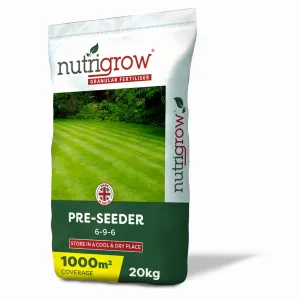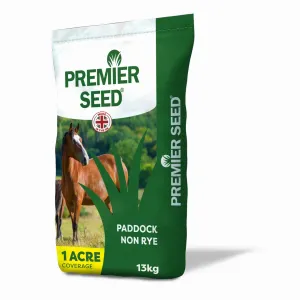Tackling grazing land after winter-resting or managing a patchy paddock can seem overwhelming. How do you start, and how do you manage weeding and seeding without wasting time?
Over time, grassland will revert back to native weed grass species – hastened by fluctuations in weather. These types of weed grass are less nutritious for horses, so removing them should be priority.
Anything poisonous to horses needs to go (whether growing or when dried) including:
• Ragwort
• Groundsel
• Buttercup
• Bracken
• Laburnum
• Hemlock
• Foxgloves
• Milkweed
• Cowbane and Water Dropwart
• Hard Rush and Horsetail
• Overhanging Ivy, Oak, Sycamore, Yew, Rhododendron, Maple, Deadly Nightshade or Laurel.
Use Thrust to control weeds. A strong selective weedkiller, it is highly effective on Ragwort, thistle, soft rush, and buttercup – and is safe for paddocks as it will not harm the grass.
Grazon Spot will help you tackle young and actively growing weeds in pasture, including thistle, dock and nettle, as well as many other annual and perennial weeds.
Next, check and fill rabbit holes and fence off badger setts. Then select a good fertiliser with the right balance of nitrogen, phosphate, and potassium that will avoid scorch to young, tender grass.
Agrigem’s 6-9-6 Nutrigrow Pre-Seeder Fertiliser is a highly-effective slow-release fertiliser, ideal for healthy plant growth. Read more about fertilising your paddock in Katie’s blog.
Good grazing is vital for horse and pony health. Creating buoyant pasture with healthy grass will also help your paddock resist weather impacts like drought. Selecting the right paddock grass seed is an integral part of this process.
Non-rye grass seed creates a highly resilient grazing turf while avoiding some of the dietary issues associated with ryegrass like sugar production (which can affect horses prone to laminitis).
Premier Paddock Non Rye is exclusive to Agrigem and is perfect for overseeding poached or patchy areas, or seeding new grass.
Sow seed when the ground is not too dry or too wet, and the ground is well prepared. You might want to graze or cut unproductive pasture before seeding, then harrow to remove thatch.
If you have gaps in your sward after weeding, over seed these areas to stop weeds from getting a hold again. Grass seed will germinate more effectively when the ground is warming and rain is due. Find out more about how to seed a paddock in our handy guide.
Lightly roll the area after seeding and after rainfall to help seed make contact with the ground and to help with rutting. Don’t allow horses to graze on new grass until it is properly established.
Whatever stage your paddock is at, a good plan will help give your pasture the best chance of delivering excellent nutrition to your horses and prevent over-grazing.
Start with the essentials this spring and get your pasture in first rate condition ready for grazing.







